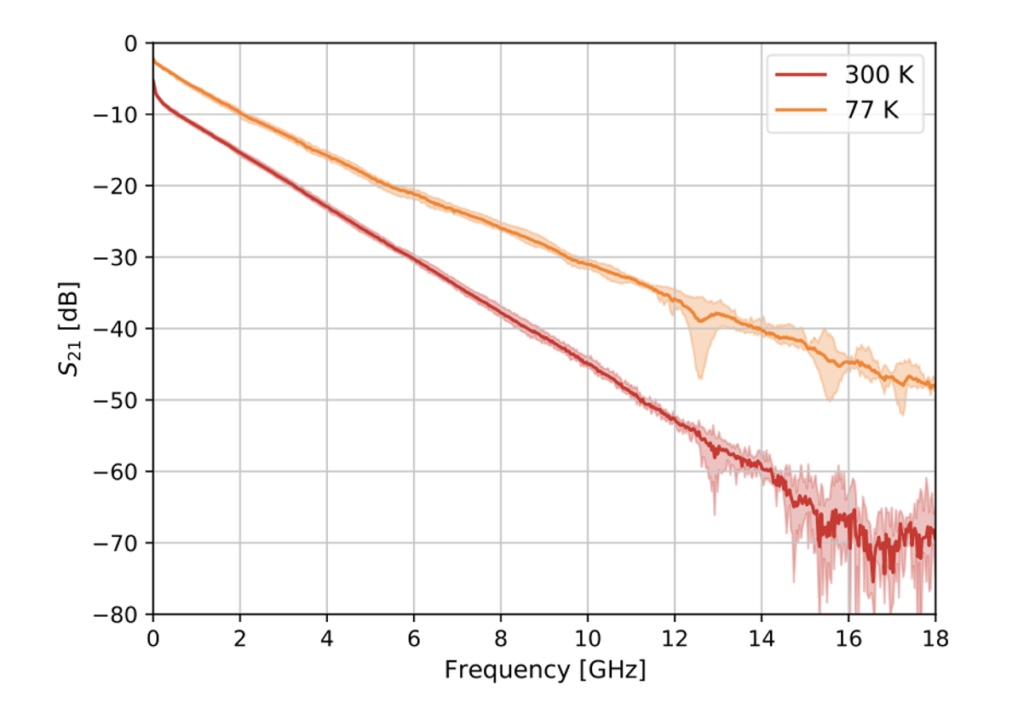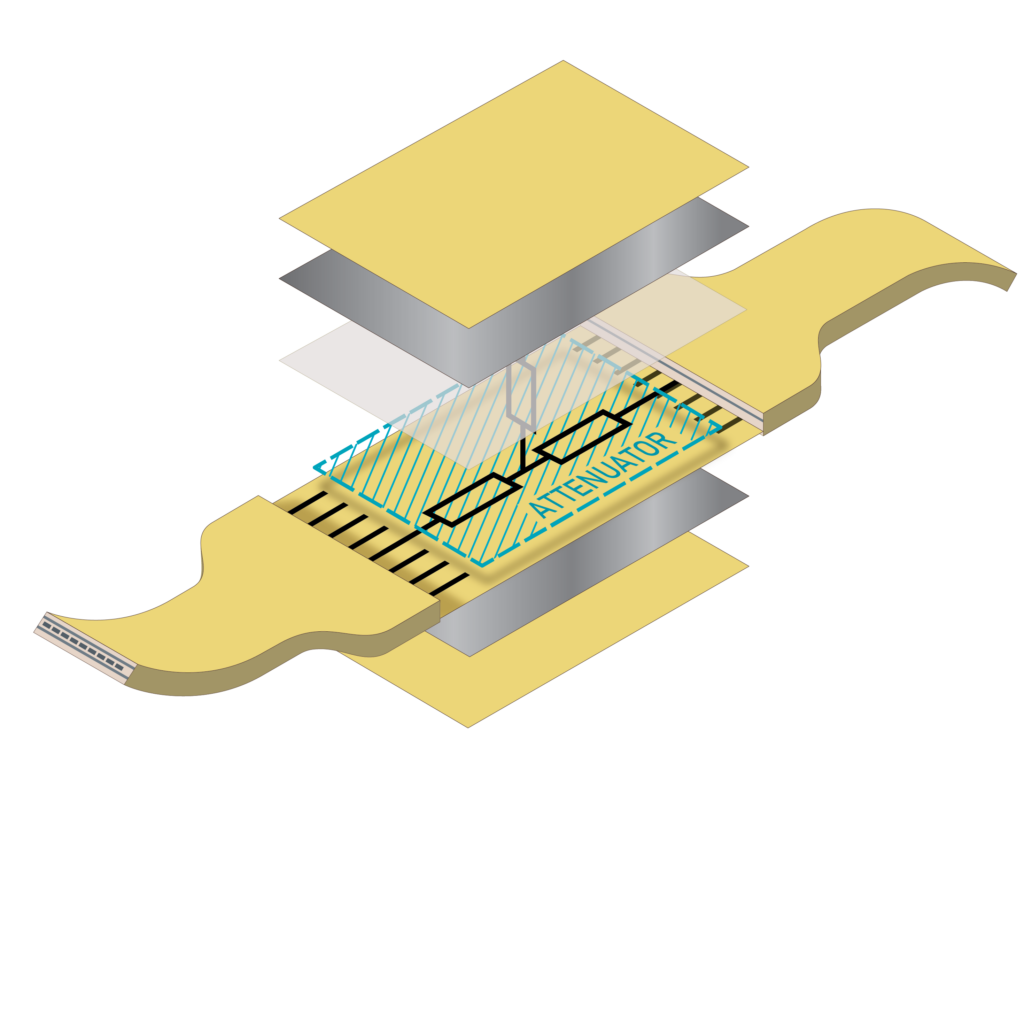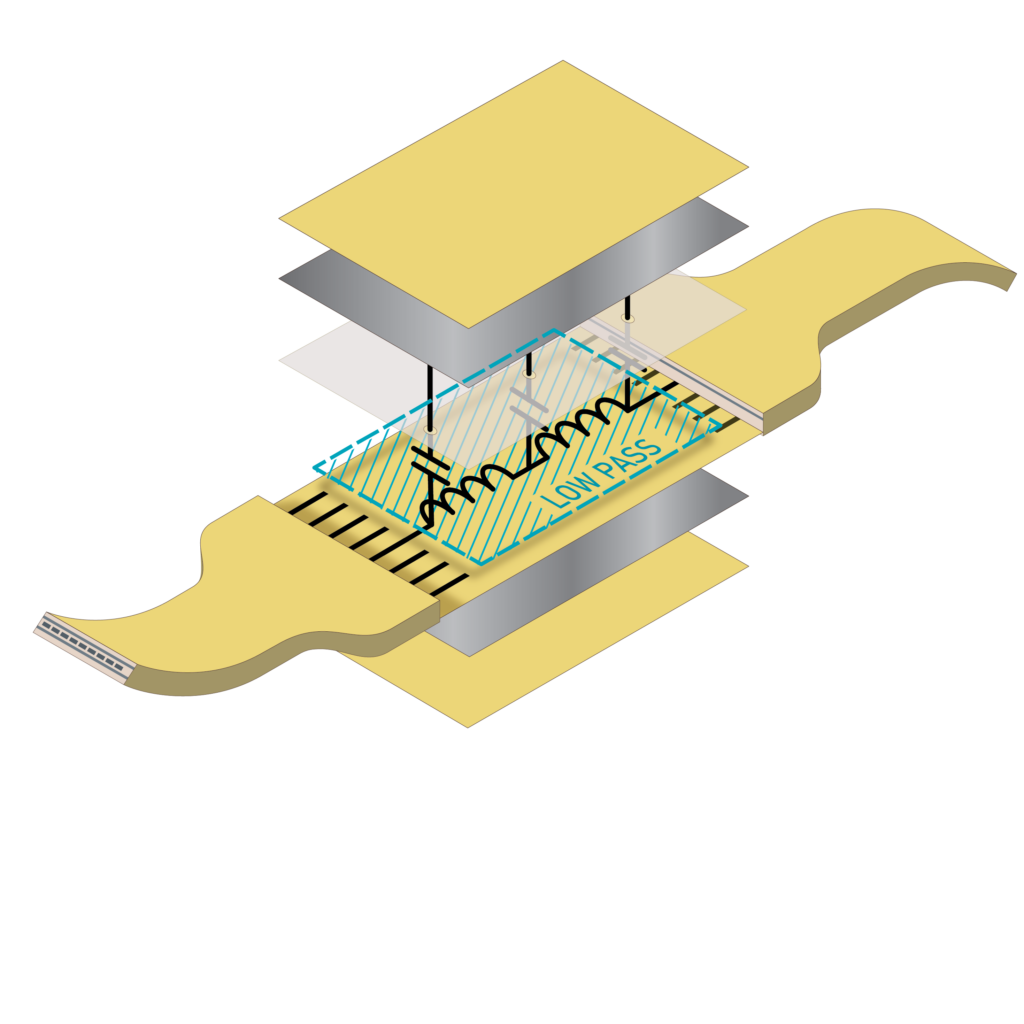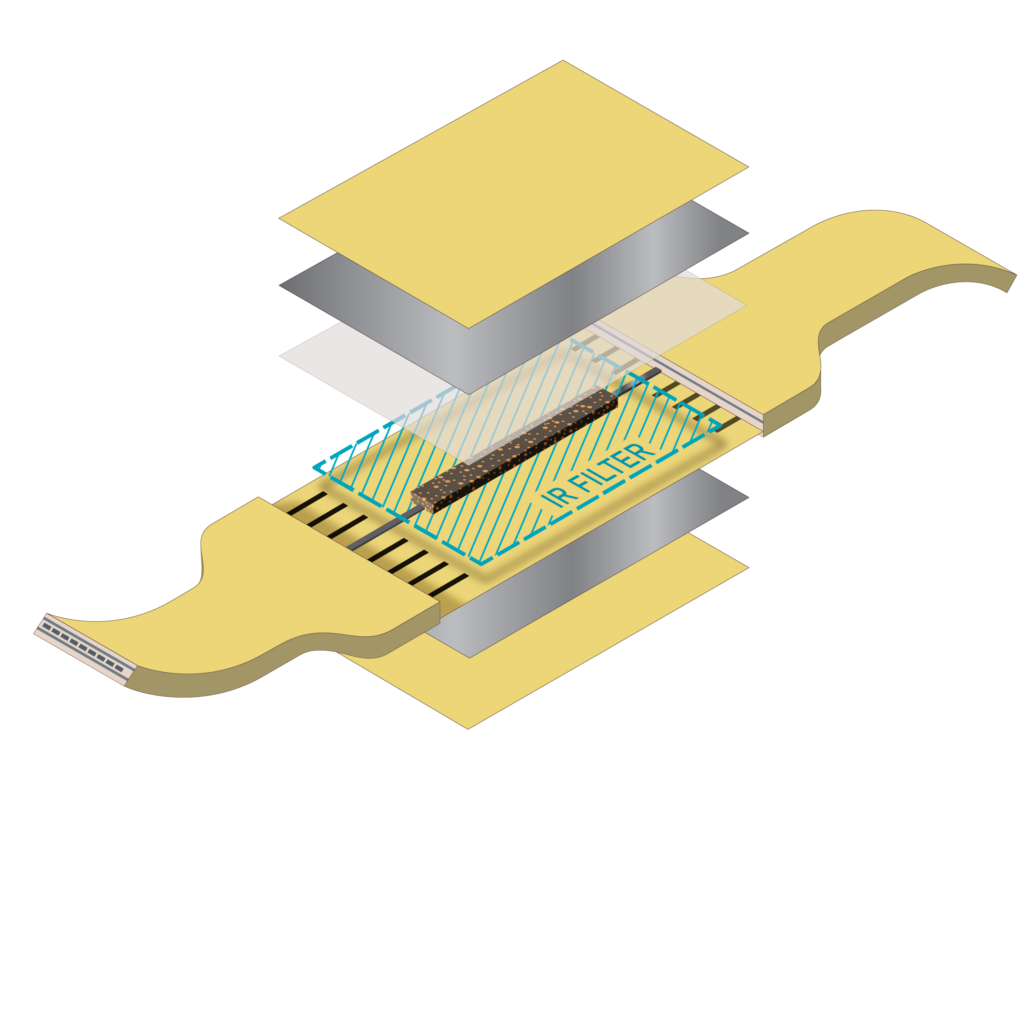Integrated Components
Hassle free integration of all components inside flex
A key feature of our Cri/oFlex® technology is the integration of microwave filtering components on the flex. This reduces the number of breakouts on the chain, limiting the number of components (mainly connector), simplifying installation and removing points of failure. Our current library of filtering components includes attenuators and low-pass- and infrared (IR) filtering.
Attenuator
Our integrated attenuators are based on impedance matched resistance networks. The attenuation can be specified in 5 dB increments allowing for custom attenuation. By attenuating both the signal and johnson noise at each thermal stage, optimal signal to noise ratios can be achieved at the quantum device. The thermal clamps provided with the attenuators ensure improved thermalization of the integrated resistors compared to other solutions and limit thermal (johnson) noise.
The data (shown in the figure below) is of a 20 dB attenuator integrated into a Cri/oFlex® 3, measured at 77 K. It shows the minimum, maximum and average of the 8 channels in the cable. Attenuators are currently available on Ag-based Cri/oFlex®.
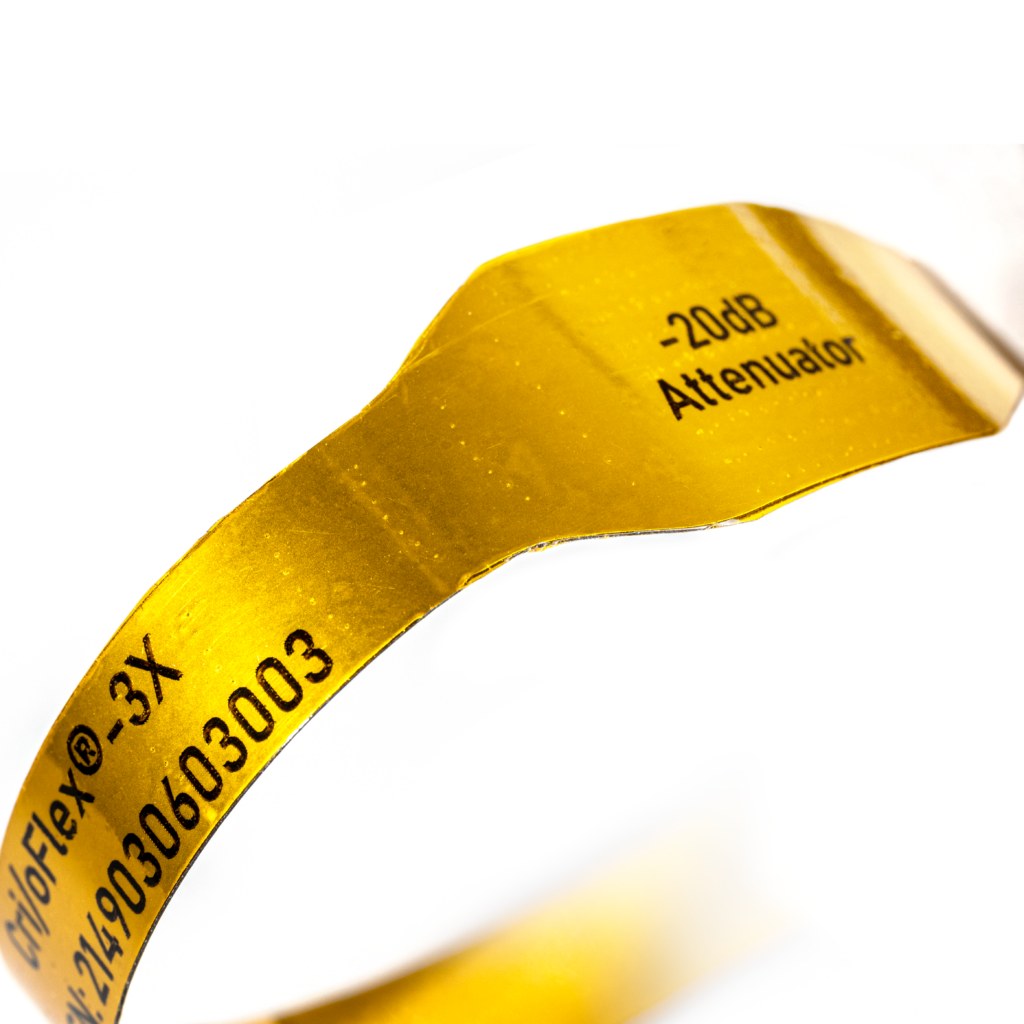

Attenuators shift the dynamic range and noise levels of the room temperature signal generators to the regime that is needed for the operation of the quantum devices.
The location of the attenuator in the cryostat needs to be carefully chosen as lower temperatures are better for limiting the extra Johnson noise generated in the resistors of the attenuator, but in most cryostat higher temperatures offer more cooling power. The usual solution is therefore a distribution of various attenuators thermalized to different temperature plates. With the integrated solution that is offered by Delft Circuits the optimal solution can be manufactured and installed without any limitation on the ease of installation or scalability of the system.
Given your requirements, Delft Circuits can calculate the optimal distribution of attenuators for you and the resulting expected noise levels.
Low-pass filter
Our low-pass filters are based on a distributed element LC design and have a customizable (options: 1, 8 GHz) cut-off frequency with flat roll-off in the pass band and 40 to 60 dB suppression in the stop band. In the figure, we plot the typical spread of an 8-channel Cri/oFlex® 3x with this type of filter. Also, it shows the close matching between the measurements and our simulation. Low pass filters are currently available on Ag-based Cri/oFlex®. By integrating these filters, noise and undesired frequencies can be surpressed at the quantum device.
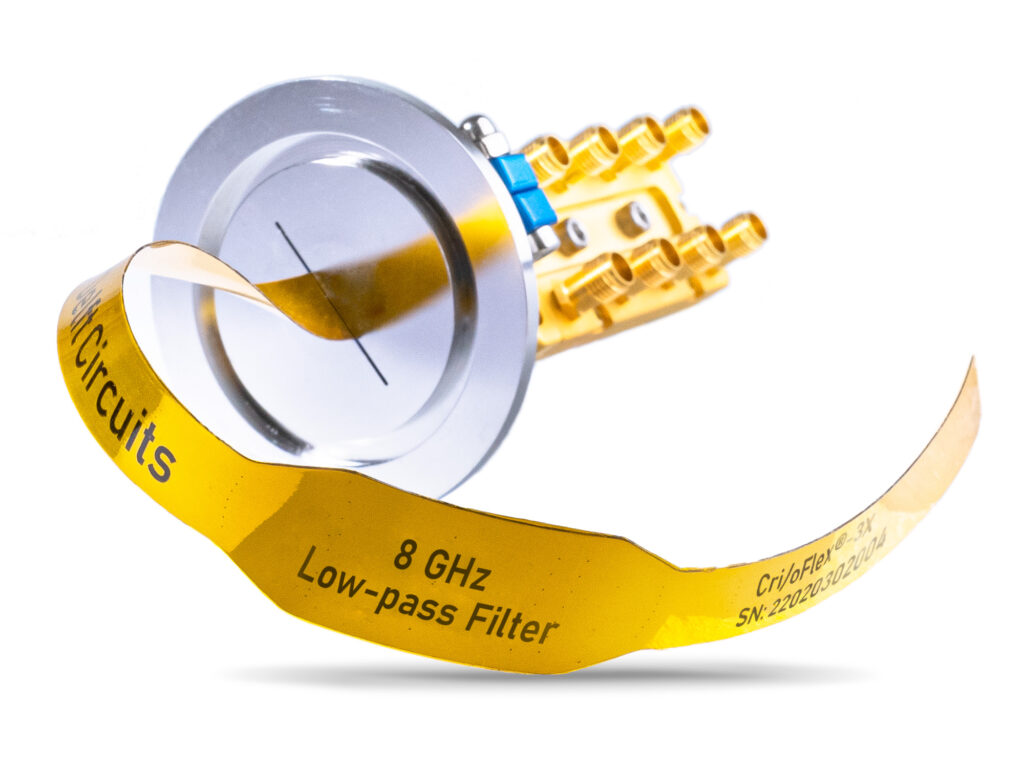
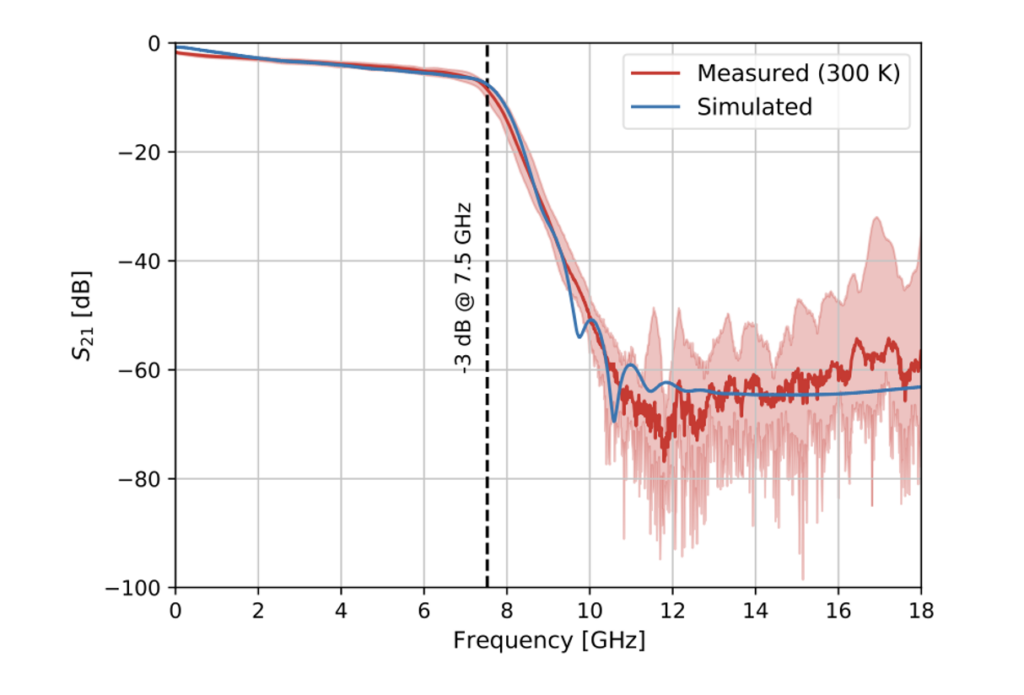
Infrared filter
Our multichannel integrated IR filters are based on metal powder filters dissipating signals increasingly with higher frequencies up to the THz range. The damping prevents performance limiting high frequency radiation from entering the quantum device. When placed correctly in the provided thermal clamps, noise temperature is unaffected. The IR filters have a filtering range between 0.5-3dB/Ghz.
In the figure, we plot transmission data from our IR filters. Specifically, the spread in an 8-channel Cri/oFlex® 3x. The measured attenuation at 77 K is 2 dB/GHz. Infrared filters are available on both Ag- and NbTi based Cri/oFlex® with attenuation between 0.5 and 3 dB/GHz.

